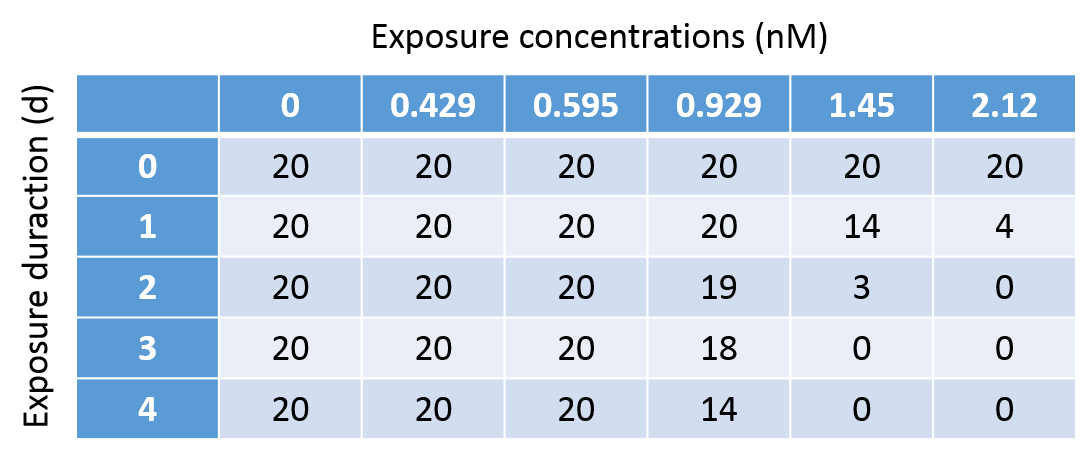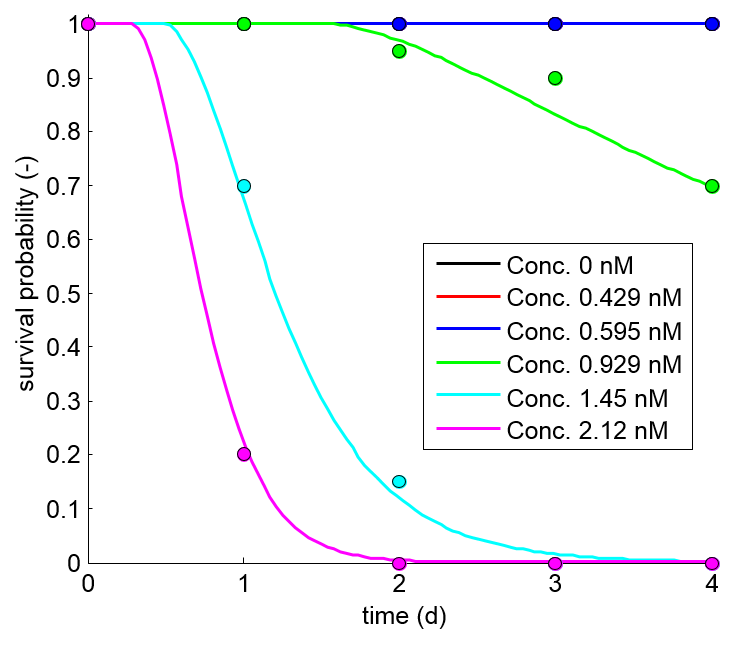What is GUTS?
GUTS stands for "General Unified
Threshold model for Survival". In other words, a modelling
framework for the analysis of toxicity tests for the
endpoint "survival". The method is expertly suited to
analyse the results of standard acute toxicity tests (such
as the 4-day test with fish, and the 2-day test with
Daphnia). The "unified" relates to the fact that almost all
models for the analysis of survival data can be seen as
special cases within the GUTS framework. More
background on GUTS. The simplest special case of GUTS
was included into OECD and ISO guidances as early as 2006,
under the denominator "biology-based methods". Download
the OECD guidance.
GUTS thus replaces the standard dose-response analyses that
are used to calculate an LC50.
Advantages of a GUTS analysis:
- Model parameters are estimated using all data points
(for all treatments and all time points simultaneously).
This implies more confidence, but also that data can be
analysed that otherwise would need to be discarded
(e.g., when there is no treatment with partial mortality
at the end of the test).
- Time-varying exposure during the test can easily be
accommodated, as long as the exposure profile is known
(or can be estimated reliably). So, there is no strict
need for constant exposures.
- No problem when the animals grow (or shrink) during
the test, as long as the amount of growth (or shrinking)
is determined (or can be reliably estimated).
- No problem when animals disappear from the test
without dying from the test chemical (e.g., animals that
escape, clear errors in handling, removal of animals
during the test for destructive analyses). The
information that the animals were still alive at a
certain timepoint can be weighed into the analysis.
- Model parameters can be used to predict LCx,t (with
confidence interval) for any effect fraction x and any
exposure duration t (extrapolation to non-tested
exposure durations is thus possible).
- Model parameters can be used to predict mortality
(with confidence interval) for any exposure profile
(e.g., profiles resulting from monitoring data or fate
models).
- The method can also be used to analyse or to predict
the effects of multiple stressors (mixtures of
toxicants, or the combination of chemical and
non-chemical stressors).
Dr. Tjalling
Jager (one of the developers of GUTS) acts as an
advisor for these activities of Bongers EcoTox Services.
A practical example
The advantages of the
GUTS-approach are most easily demonstrated by an example
analysis on a typical data set. The data used here are for
the insecticide fenvalerate
in fathead
minnows (Pimephales promelas). The test design
includes 6 treatments (including a control) with 20
individuals per treatment, and 4 days at which survival is
scored. Normally, only the results on day 4 are used to
calculate an LC50 (which is problematic here as there is
only a single treatment with partial mortality).
|








